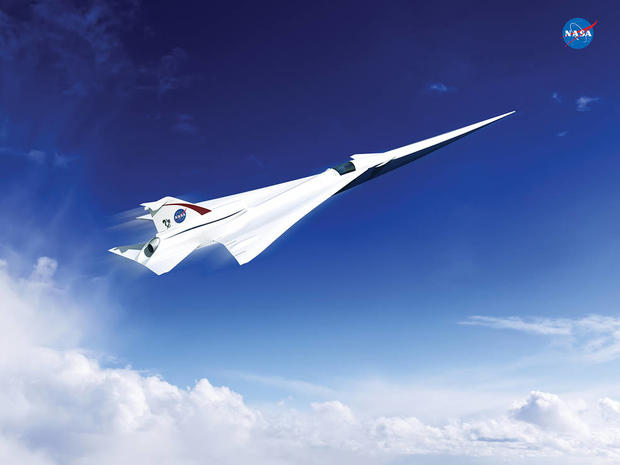NASA developing next generation of supersonic planes
Cramped leg space. Delayed connections. Expensive tickets.
It seems that hassle-free jetsetting has become more of a science fiction fantasy as opposed to a modern traveler's reality.
But NASA is determined to change that with the next generation of supersonic jets. At a press conference Monday afternoon at Reagan National Airport near Washington, D.C., the space agency announced plans to pioneer developments in aviation speed, safety and energy efficiency with experimental aircraft, often referred to as "X-planes."
NASA Administrator Charles Bolden said, "NASA is working hard to make flight greener, safer and quieter -- all while developing aircraft that travel faster, and building an aviation system that operates more efficiently."
He added that the work has historical precedent: "It's worth noting that it's been almost 70 years since Chuck Yeager broke the sound barrier in the Bell X-1 as part of our predecessor agency's high speed research. Now we're continuing that supersonic X-plane legacy with this preliminary design award for a quieter supersonic jet with an aim toward passenger flight."
Such ambitious plans, however, require collaboration with the private sector. NASA awarded a $20 million contract to Lockheed Martin to develop a design it calls QueSST, or Quiet Supersonic Technology. Ultimately, NASA envisions flight testing to begin in the early 2020s.
"This investment will allow us to make giant new leaps," Bolden said.
Some of those leaps include saving the commercial airline industry $255 billion over the next 25 years by reducing aircraft fuel consumption to half of what it is today. The futuristic designs could also decrease the sound impact of an airplane to just 42 decibels, and increase the amount of available oxygen in the cockpit with an all composite airframe.
Most enticing to future air passengers, however, might be the reduction in transit time.
"Just imagine, you [could] go anywhere in the world [in] less than six hours flying a supersonic jetliner," said Jaiwon Shin, NASA's associate administrator for aeronautics research.
Bolden agreed that was a big draw, observing,"When you're on a 13-hour trip, even the most comfortable airplanes that I've been in, it turns into an airplane after about six hours."
The only commercial supersonic jet, the Concorde, was phased out in 2003 over cost and safety concerns.
Even with faster and quieter aircraft, Shin told CBS News that future travelers won't see increases in the cost of their tickets. One of the main reasons airlines are becoming stingier, he says, is because fuel accounts for one-third of their operating costs. Thanks to greener technology, future airlines could save about 50 percent or more in fuel consumption.
"I don't think the general aviation consumer will see any [financial] affects yet because this is a government-industry partnership where we're putting out significant portion of the expense, so they've already paid for that in their taxpayer dollars. What we're trying to do is actually put the taxpayer dollars to work in the most efficient and effective manner that we can find for them," Bolden said.
The demand is expected to keep on growing. The International Air Transport Association forecasts the number of passengers worldwide will more than double, from 3.2 billion to 7 billion, by 2034.
